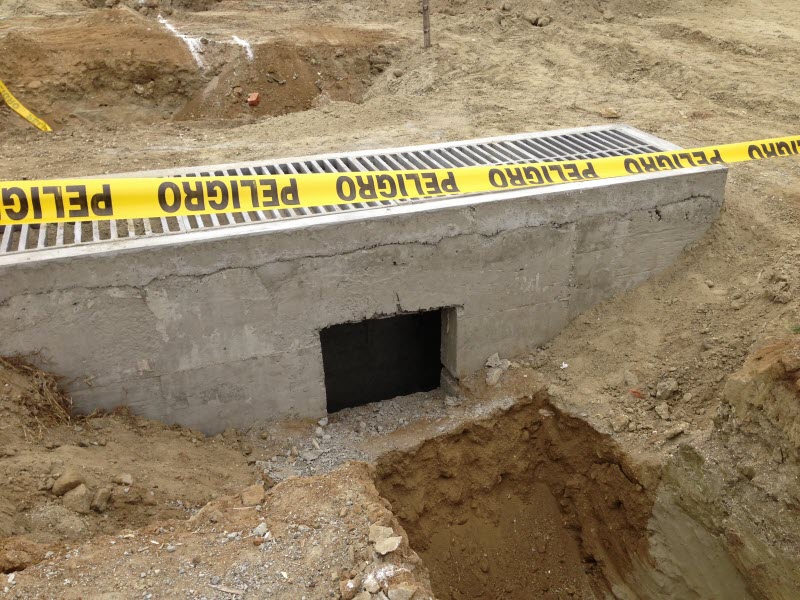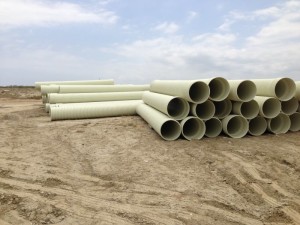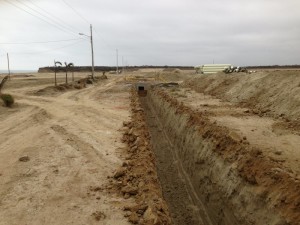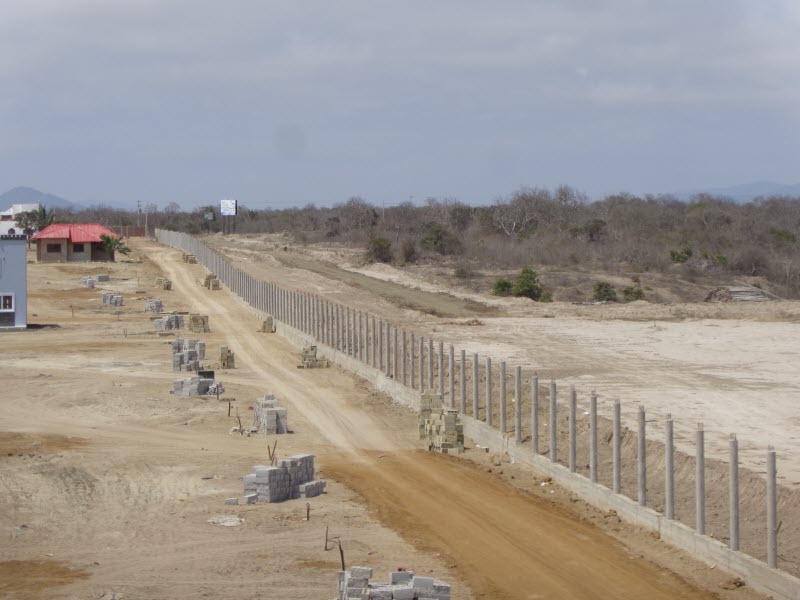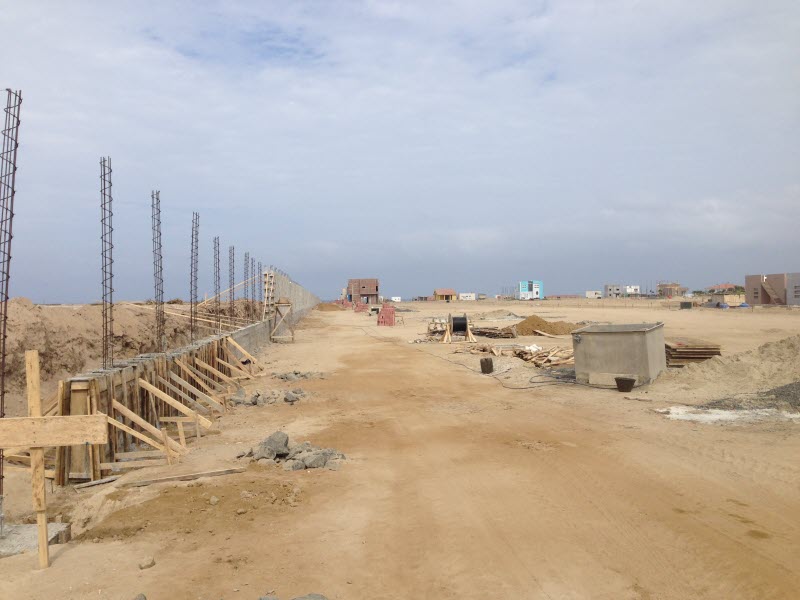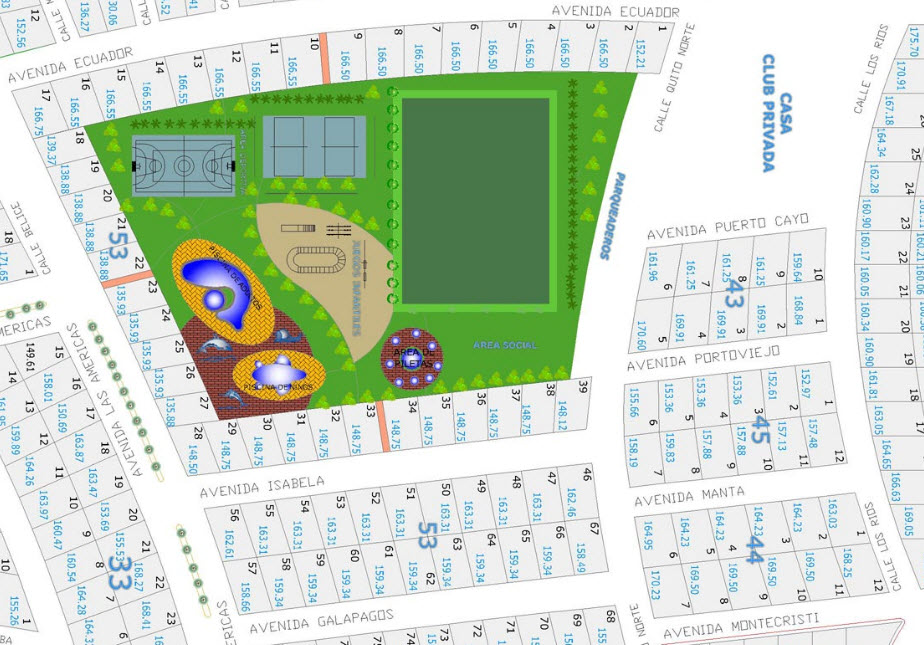
FIFA Soccer Field
July 2, 2013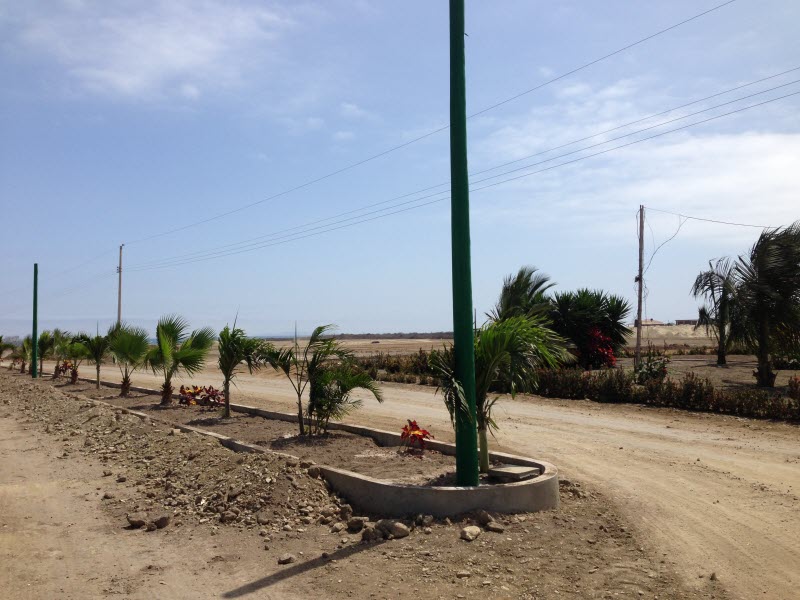
Avenida de las Americas street lights
August 6, 2013The holding tanks in Zone A have been capped off with the steel girders (“manholes”) and will be connected with the large plastic pipes that will carry the run-off water to the sea. The holding tanks act like storage containers to slow the drainage of water down to manageable levels. Mirador San Jose will have specific engineered drainage systems in place for the entire community. Each Zone has their own drainage network of pipes and holding tanks.
“The sloping of the land is just as important in assisting the water run-off to go where we want it.” We’re building a town here and every aspect of the infrastructure must be in place for the community. We are fortunate that the area of Mirador San Jose is considered a dry tropical forest. The amount of rain we receive is very little, with the majority of rainfall occurring in January and February during the wet season months. There is an easy way to remember when the wet season and dry season occurs on the coast of Ecuador. Just think directly opposite of the season you are currently in. When it is summer in North America, the coast of Ecuador is in the dry months (or winter.) Wet season on the coast is essentially the winter months for North America. As far as temperature goes, the difference between dry and wet season’s are not very significant. Average temperatures in the wet season are usually around 29 Celsius, and dry season averages 25 Celsius.
Stay updated with important announcements and promotions. Subscribe to our Free Newsletter delivered straight to you inbox at the end of every month!

